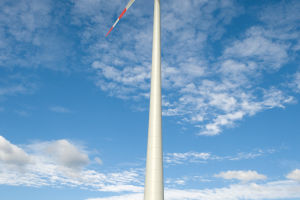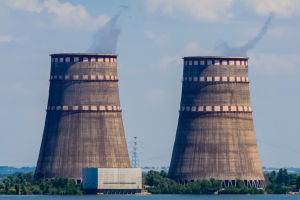
Photovoltaic Evolution

Photovoltaic power generation is a technology that converts solar energy directly into electrical energy using the photovoltaic effect at semiconductor interfaces. It primarily consists of three parts: solar panels (modules), controllers, and inverters, with electronic components comprising the main components.
After being connected in series and encapsulated for protection, solar cells form large-area solar modules, which, when combined with components like power controllers, constitute a photovoltaic power generation system.
The origin of photovoltaic power generation can be traced back to 1839, when French physicist Becquerel discovered the photovoltaic effect. Subsequently, in 1954, scientists at Bell Laboratories invented the silicon solar cell, the world's first device capable of converting solar energy into electricity, marking a new chapter in the development of photovoltaic power generation technology.
Related
 Virtual power plants optimize energy grids by aggregating distributed resources intelligently.
Virtual power plants optimize energy grids by aggregating distributed resources intelligently.
 Barley, ancient and versatile, serves diverse purposes worldwide.
Barley, ancient and versatile, serves diverse purposes worldwide.
 The 19th-century plant transportation revolution: Wardian case innovation revolutionized explorers' journals.
The 19th-century plant transportation revolution: Wardian case innovation revolutionized explorers' journals.
 Nuclear power emerges as pivotal in global energy transition, with expanding capacity worldwide.
Nuclear power emerges as pivotal in global energy transition, with expanding capacity worldwide.
 Agriculture's growth poses challenges: hunger, environmental decline, and hidden costs.
Agriculture's growth poses challenges: hunger, environmental decline, and hidden costs.
 Wheat and Rice: Exploring the Contrasts in the Staple Foods of Humanity.
Wheat and Rice: Exploring the Contrasts in the Staple Foods of Humanity.
With the continuous development of technology, photovoltaic power generation technology has been advancing. In the 1970s, due to the outbreak of the oil crisis, many countries began seeking alternative energy sources to reduce their dependence on oil, leading to rapid development and application of photovoltaic power generation technology.
Today, photovoltaic power generation has become an important renewable energy source. Many countries worldwide vigorously promote photovoltaic power generation projects for sustainable energy development. Meanwhile, with the continuous advancement of technology and the gradual reduction of costs, the price of photovoltaic power generation is gradually approaching that of traditional energy sources.
However, photovoltaic power generation still faces challenges, such as the energy storage technology bottleneck and grid infrastructure construction.
According to statistics, if the component efficiency is below 90% within ten years, it can be identified as abnormal decay.
Additionally, due to the barrel effect of photovoltaic strings, if one component in the string decays excessively, the efficiency of the entire string will decrease significantly. Timely identification and maintenance of problematic components are essential for ensuring the overall power generation of the whole plant.
Operation and maintenance of photovoltaic power plants are challenging. Effective operation and maintenance are essential measures to ensure the profitability of photovoltaic power plants.
However, the lack of detection means for component status and photovoltaic cables in photovoltaic power plants leads to unlocatable problems, and hidden dangers cannot be eliminated. Moreover, photovoltaic string voltages exceeding 1000V and not being able to be shut down can cause interference during maintenance or rescue.
It is difficult to distinguish and locate abnormal components. Abnormal components (such as hidden cracks) cannot usually generate electricity and will reduce the power generation of the entire string. Therefore, it is essential to investigate and locate such components. Furthermore, due to their noticeable differences in appearance from standard components, it is challenging to conduct inspections.
Repairing photovoltaic cables laid under the components is difficult. When photovoltaic cables age or wear out, their insulation capability decreases, leading to leakage current. Inverters cannot start due to leakage current, which is more common after rain or snow. If the cables under the components are not promptly inspected and handled, further wear may occur, leading to arcs, high temperatures, and fires.

Inverters cannot shut down the string voltage on the DC side. When photovoltaic power plants need to replace components, the string DC side still has high voltage, and maintenance personnel must operate live, which is extremely dangerous. In case of crises, the high voltage of the components may further endanger the lives of rescue personnel.
With the unremitting efforts of researchers and continuous technological innovation, these issues are believed to be gradually resolved.
Photovoltaic power generation is a significant new energy technology that can bring many conveniences to our lives while also helping to protect the environment and promote sustainable development.